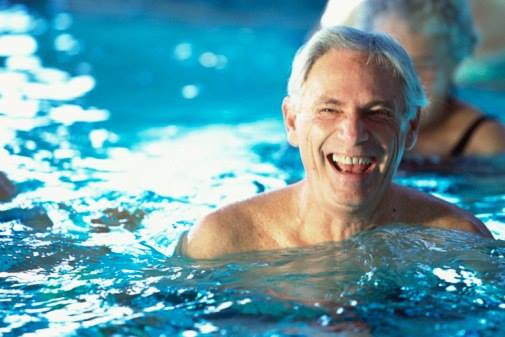Senior Exercise Overview
 “If I knew I was going to live this long, I would have taken better care of myself” -- George Burns
“If I knew I was going to live this long, I would have taken better care of myself” -- George BurnsDid you know . . .
- Muscle mass decreases as we age . . . 1 to 2 percent per year after the age of 50!
- Muscle keeps us strong, burns calories, helps maintain our weight, contributes to balance and bone strength.
- Muscle mass can increase at any age in response to exercise . . . so it is never too late to build muscle!
- Endurance also decreases with age.
- Studies show that individuals that walk 30 minutes or more per day have fewer deaths than those who walk less that 30 minutes . . . even men and women who smoke or were overweight were protected from early death if they walked more than 30 minutes per day.
- Flexibility? You guessed it . . . decreases with age.
- Stretching exercises can improve the range of motion in our joints (neck, shoulders, hips, knees, ankles, ect.) which will in turn improve our function and health.
- Balance also decreases with age and falling is a major problem as a result.
- According to the US Centers for Disease Control and Prevention, one of every three Americans over the age of 65 falls each year!
- Falls account for 87% of all factures and are a leading cause of spinal cord and brain injury among individuals 65 to 84 years of age.
- Physical activity, muscle strengthening and balance retraining exercises can reduce the risk of falls and fall injuries by as much as 35 to 45 percent!
- Bones tend to decrease in density as we age and can lead to an increased risk of fracture.
- Exercise such as weight lifting and even just walking can increase bone density. Both cause stress on the bones as muscle contracts which stimulates the bones to thicken
- Research suggests that exercise can also increase our cognitive function as well as improve our mood. . . whether it’s from getting the heart beating and the blood pumping, invigorating brain cells or simply getting out in the fresh air!
